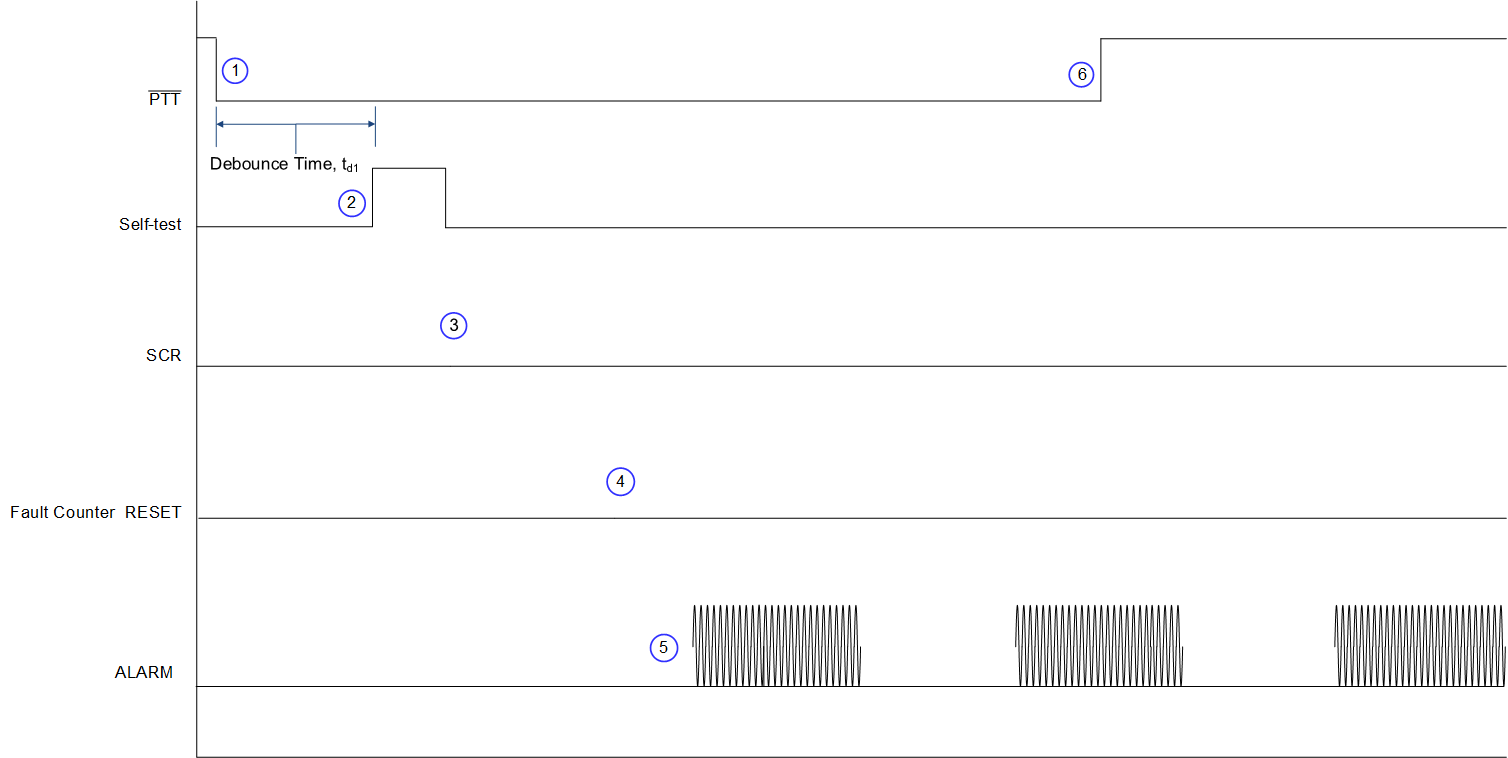SBFS042 June 2020 AFE3010
PRODUCTION DATA.
- 1 Features
- 2 Applications
- 3 Description
- 4 Revision History
- 5 Pin Configuration and Functions
- 6 Specifications
- 7 Detailed Description
- 8 Application and Implementation
- 9 Power Supply Recommendations
- 10Layout
- 11Device and Documentation Support
- 12Mechanical, Packaging, and Orderable Information
8.1.1.2 Unsuccessful Self-Test
Figure 12 shows an unsuccessful manual self-test timing with the PTT pin.
 Figure 12. Unsuccessful Manual Self-Test Using PTT Pin
Figure 12. Unsuccessful Manual Self-Test Using PTT Pin - The test sequence starts when PTT transitions from high to low.
- After a debounce time to ensure there is no false transition, the device starts the self-test.
- If the self-test does not pass, the SCR does not fire.
- The internal fault counter doesn't reset.
- The ALARM signal starts to blink at 0.5Hz (for 60-Hz systems) to indicate the self-test fail.
- The PTT signal transitions low to high to complete the self-test event.